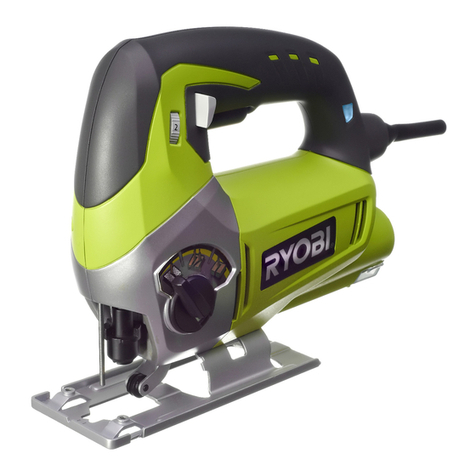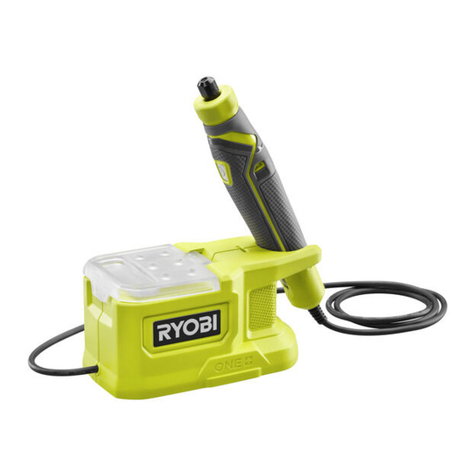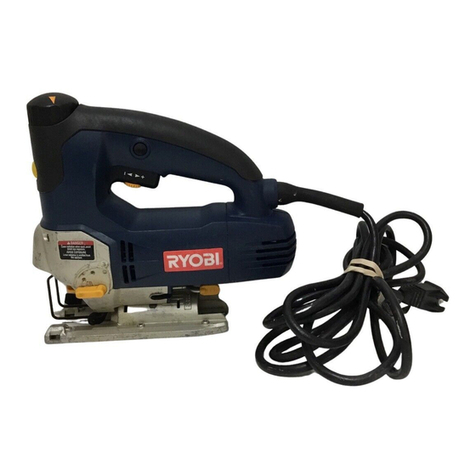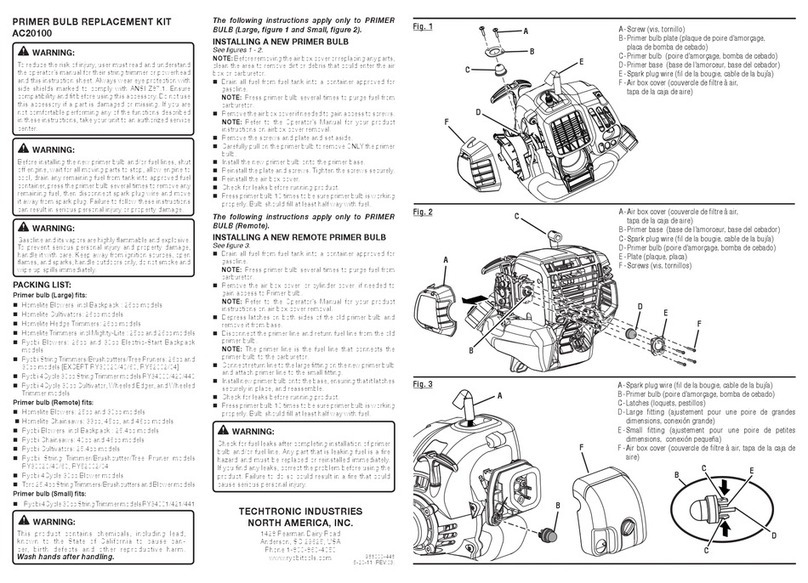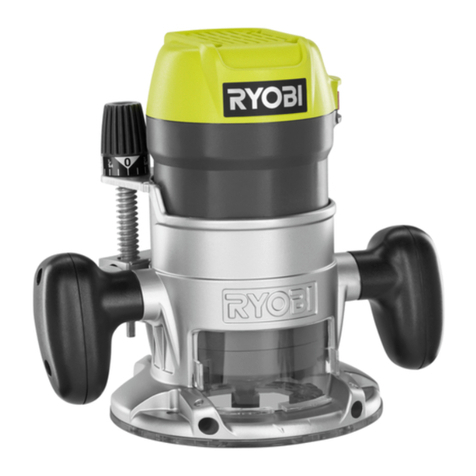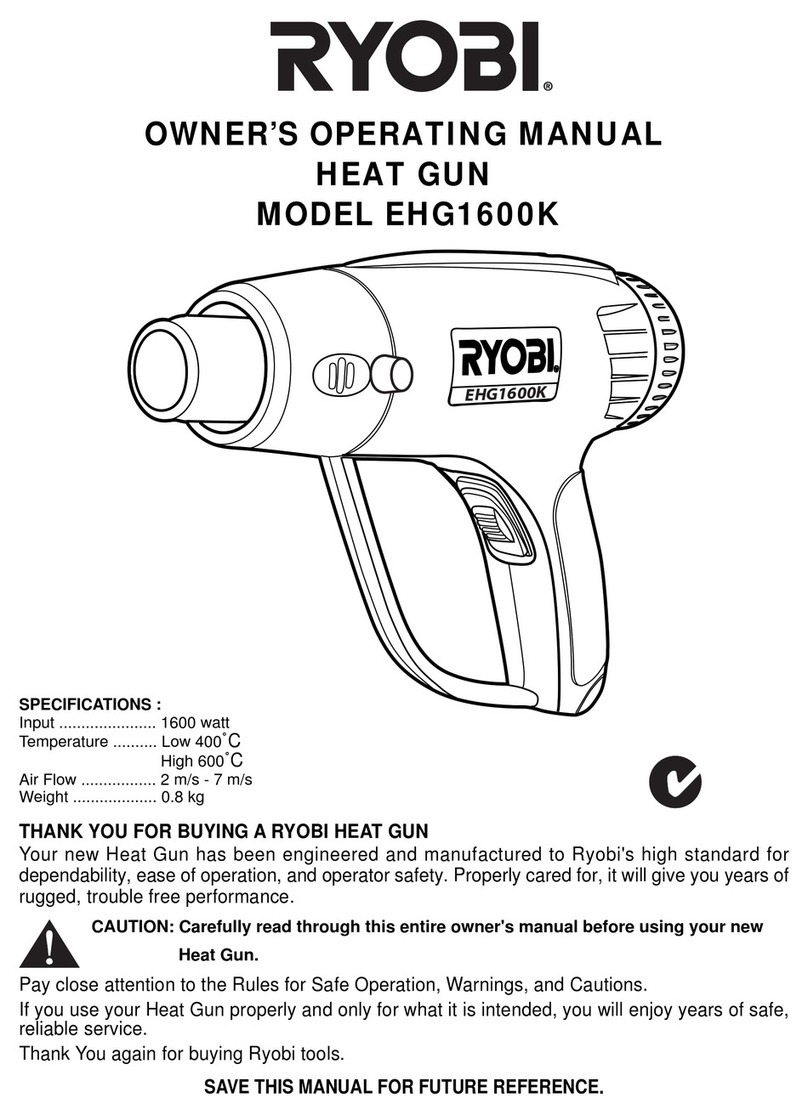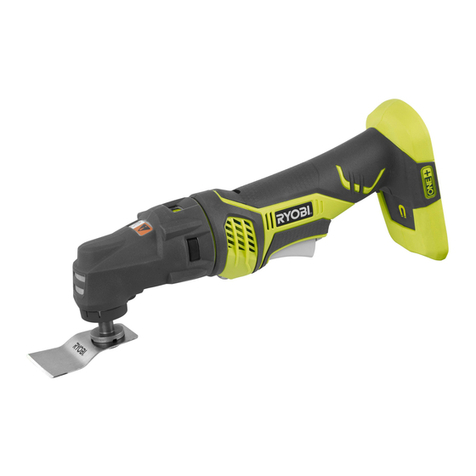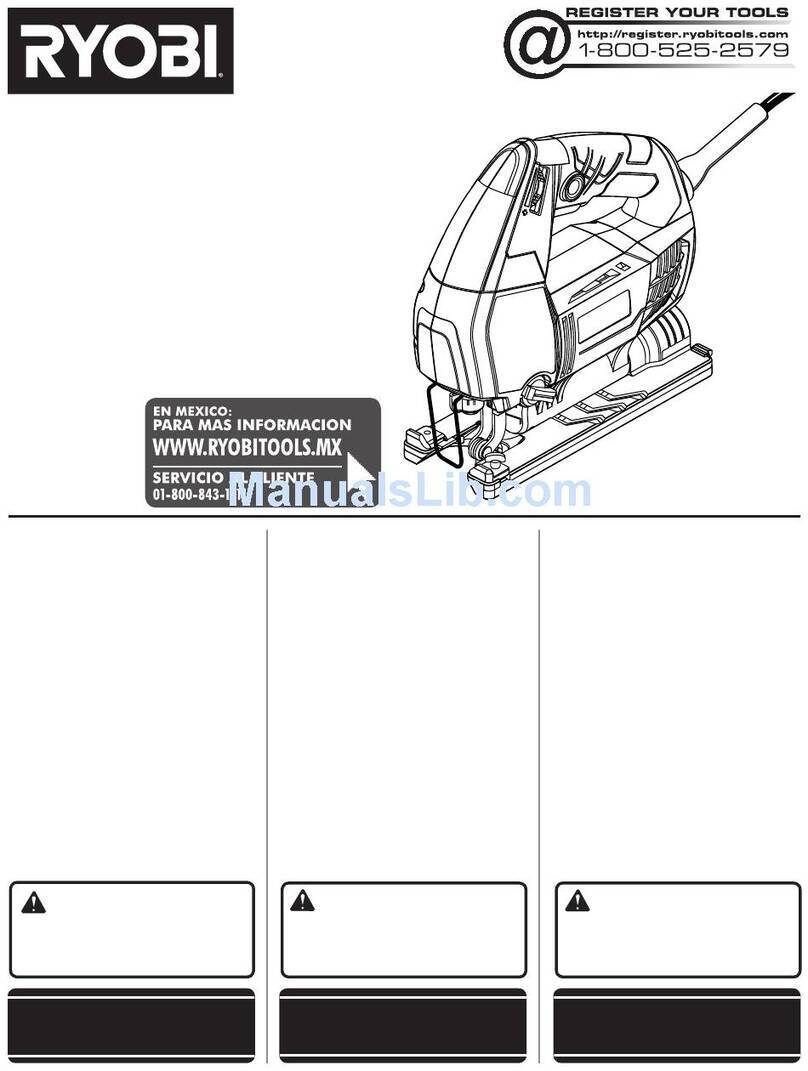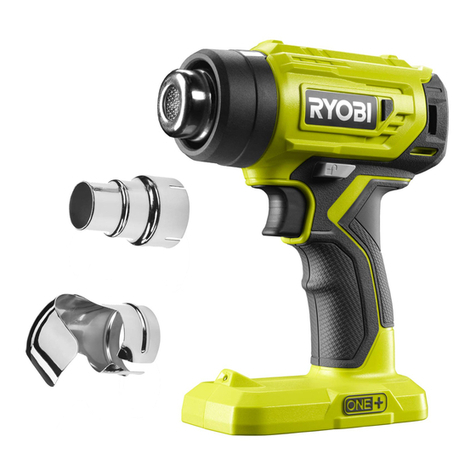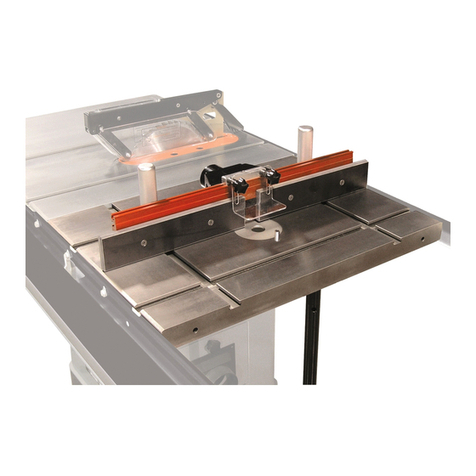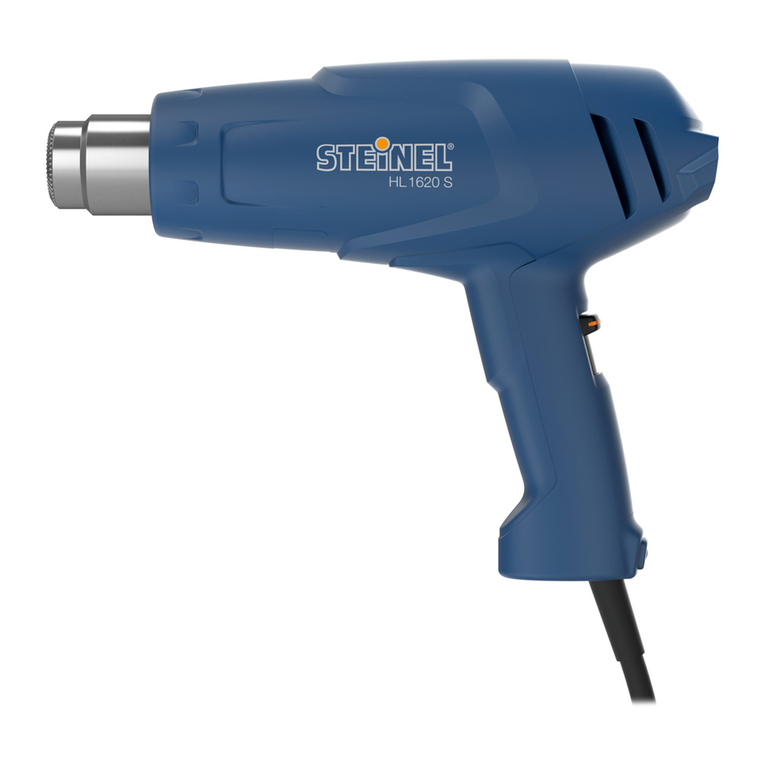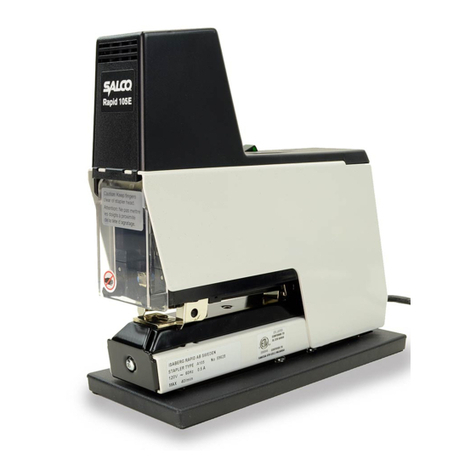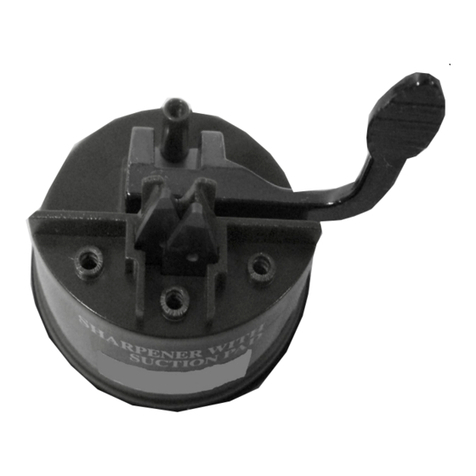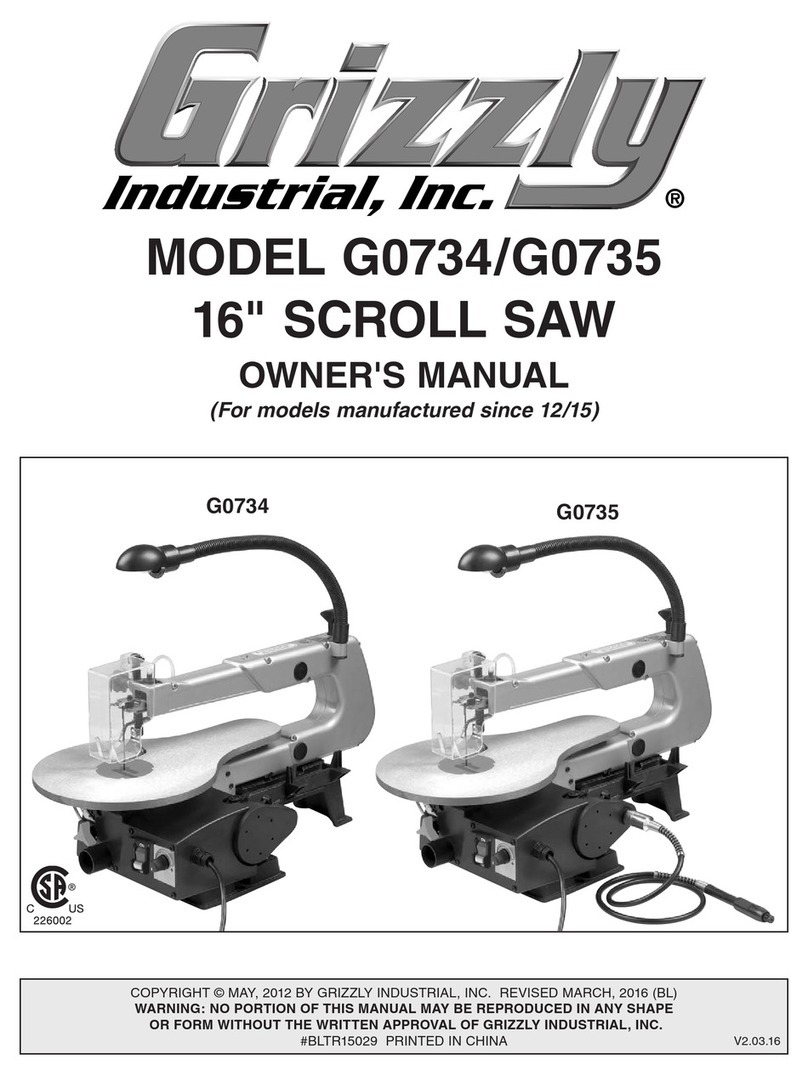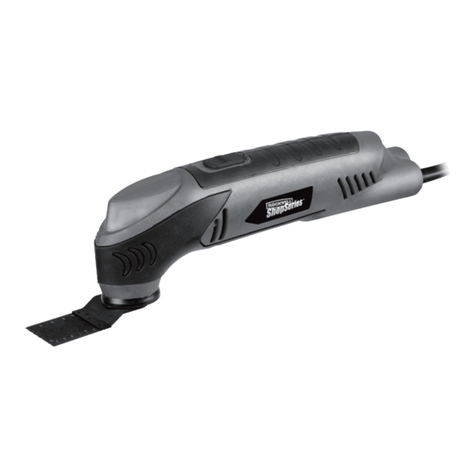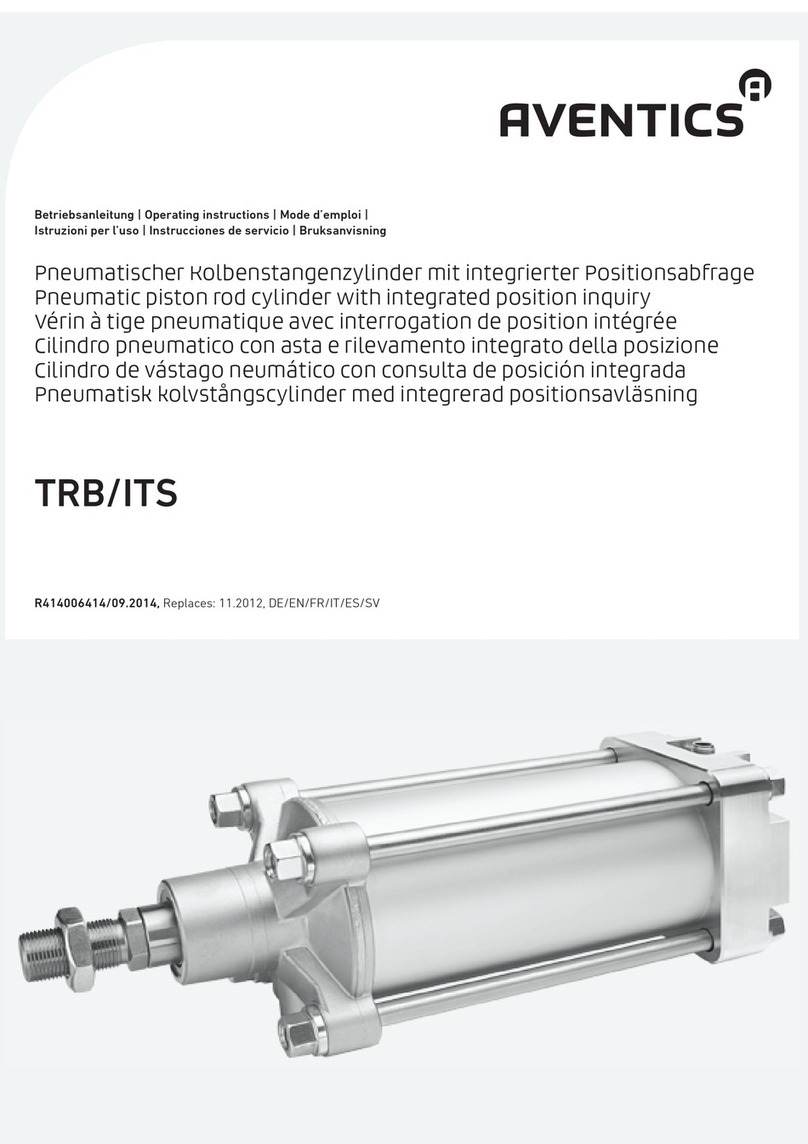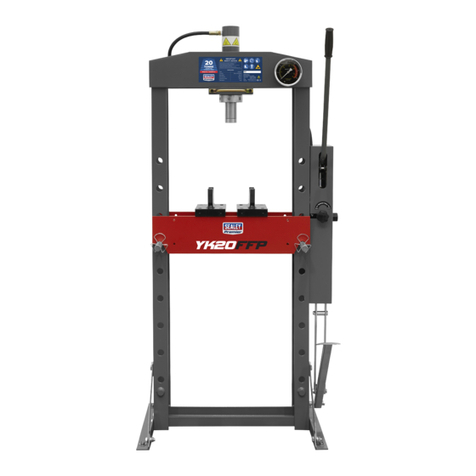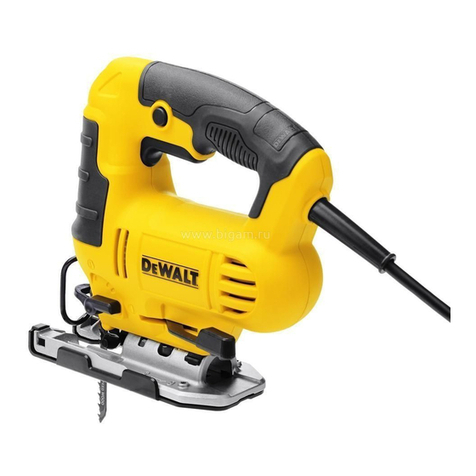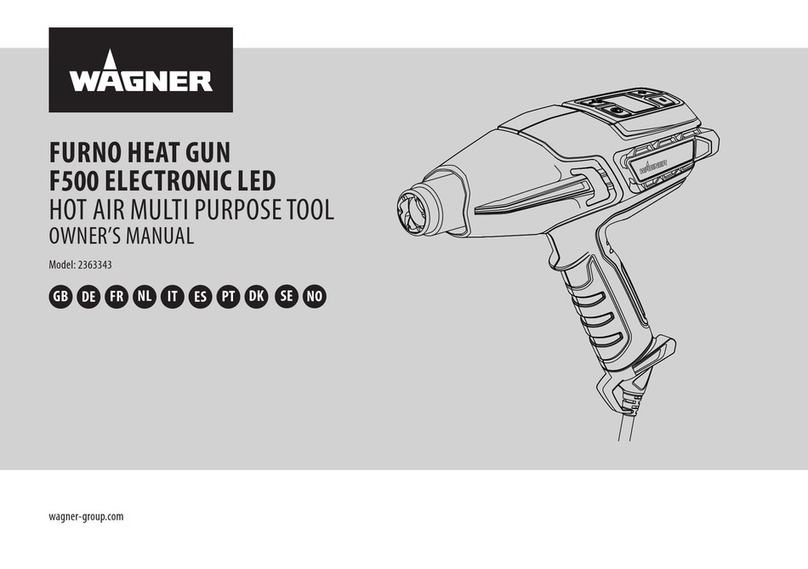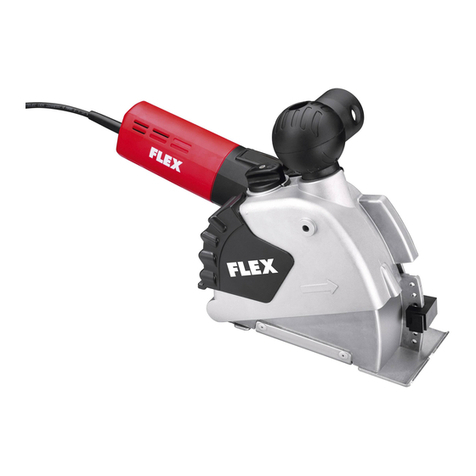Ryobi R18VI User manual

ORIGINAL INSTRUCTIONS
18V High Volume
Inflator
R18VI

Important!
This appliance can be used by children aged from 8 years and
above and persons with reduced physical, sensory or mental
capabilities or lack of experience and knowledge if they have been
given supervision or instruction concerning use of the appliance
in a safe way and understand the hazards involved. Children shall
not play with the appliance.
It is essential that you read the instructions in this manual before
assembling, operating, and maintaining the product.
Subject to technical modifications.

1
Safety, performance, and dependability have been given
top priority in the design of your inator.
INTENDED USE
The product is intended to be used only by adults who
have read and understood the instructions and warnings
in this manual, and can be considered responsible for their
actions.
The product is designed for inating air mattresses, beach
balls and similar inatables. When the deation port is
attached to the nozzle, the product can be used for deating
inatables.The product can also be used for cleaning work
surfaces.
Do not use the product for any other purpose.
GENERAL POWER TOOL SAFETY WARNINGS
WARNING
Read all safety warnings, instructions, illustrations
and specifications provided with this power tool.
Failure to follow all instructions listed below may result in
electric shock, re and/or serious injury.
Save all warnings and instructions for future reference.
The term “power tool’’ in the warnings refers to your
mains-operated (corded) power tool or battery-operated
(cordless) power tool.
WORK AREA SAFETY
■Keep work area clean and well lit. Cluttered or
dark areas invite accidents.
■Do not operate power tools in explosive
atmospheres, such as in the presence of
flammable liquids, gases or dust. Power tools
create sparks which may ignite the dust or fumes.
■Keep children and bystanders away while
operating a power tool. Distractions can cause
you to lose control.
ELECTRICAL SAFETY
■Power tool plugs must match the outlet. Never
modify the plug in any way. Do not use any
adapter plugs with earthed (grounded) power
tools. Unmodied plugs and matching outlets will
reduce risk of electric shock.
■Avoid body contact with earthed or grounded
surfaces, such as pipes, radiators, ranges and
refrigerators. There is an increased risk of electric
shock if your body is earthed or grounded.
■Do not expose power tools to rain or wet
conditions. Water entering a power tool will
increase the risk of electric shock.
■Do not abuse the cord. Never use the cord for
carrying, pulling or unplugging the power tool.
Keep cord away from heat, oil, sharp edges
or moving parts. Damaged or entangled cords
increase the risk of electric shock.
■When operating a power tool outdoors, use an
extension cord suitable for outdoor use. Use of
a cord suitable for outdoor use reduces the risk of
electric shock.
■If operating a power tool in a damp location
is unavoidable, use a residual current device
(RCD) protected supply. Use of an RCD reduces
the risk of electric shock.
PERSONAL SAFETY
■Stay alert, watch what you are doing and use
common sense when operating a power tool. Do
not use a power tool while you are tired or under
the influence of drugs, alcohol or medication. A
moment of inattention while operating power tools
may result in serious personal injury.
■Use personal protective equipment. Always
wear eye protection. Protective equipment such
as dust mask, non-skid safety shoes, hard hat or
hearing protection used for appropriate conditions
will reduce personal injuries.
■Prevent unintentional starting. Ensure the
switch is in the off-position before connecting
to power source and/or battery pack, picking up
or carrying the tool. Carrying power tools with your
nger on the switch or energising power tools that
have the switch on invites accidents.
■Remove any adjusting key or wrench before
turning the power tool on. A wrench or a key left
attached to a rotating part of the power tool may
result in personal injury.
■Do not overreach. Keep proper footing and
balance at all times. This enables better control of
the power tool in unexpected situations.
■Dress properly. Do not wear loose clothing or
jewellery. Keep your hair and clothing away
from moving parts. Loose clothes, jewellery or
long hair can be caught in moving parts.
■If devices are provided for the connection of
dust extraction and collection facilities, ensure
these are connected and properly used. Use of

2
dust collection can reduce dust-related hazards.
■Do not let familiarity gained from frequent use
of tools allow you to become complacent and
ignore tool safety principles. A careless action
can cause severe injury within a fraction of a
second.
POWER TOOL USE AND CARE
■Do not force the power tool. Use the correct
power tool for your application. The correct
power tool will do the job better and safer at the rate
for which it was designed.
■Do not use the power tool if the switch does not
turn it on and off. Any power tool that cannot be
controlled with the switch is dangerous and must
be repaired.
■Disconnect the plug from the power source and/
or remove the battery pack, if detachable, from
the power tool before making any adjustments,
changing accessories, or storing power tools.
Such preventive safety measures reduce the risk of
starting the power tool accidentally.
■Store idle power tools out of the reach of
children and do not allow persons unfamiliar
with the power tool or these instructions to
operate the power tool. Power tools are dangerous
in the hands of untrained users.
■Maintain power tools and accessories. Check
for misalignment or binding of moving parts,
breakage of parts and any other condition
that may affect the power tool’s operation.
If damaged, have the power tool repaired
before use. Many accidents are caused by poorly
maintained power tools.
■Keep cutting tools sharp and clean. Properly
maintained cutting tools with sharp cutting edges
are less likely to bind and are easier to control.
■Use the power tool, accessories and tool bits
etc. in accordance with these instructions,
taking into account the working conditions and
the work to be performed. Use of the power tool
for operations different from those intended could
result in a hazardous situation.
■Keep handles and grasping surfaces dry, clean
and free from oil and grease. Slippery handles
and grasping surfaces do not allow for safe handling
and control of the tool in unexpected situations.
BATTERY TOOL USE AND CARE
■Recharge only with the charger specified by the
manufacturer. A charger that is suitable for one
type of battery pack may create a risk of re when
used with another battery pack.
■Use power tools only with specifically
designated battery packs. Use of any other
battery packs may create a risk of injury and re.
■When battery pack is not in use, keep it away
from other metal objects, like paper clips, coins,
keys, nails, screws or other small metal objects,
that can make a connection from one terminal
to another. Shorting the battery terminals together
may cause burns or a re.
■Under abusive conditions, liquid may be ejected
from the battery; avoid contact. If contact
accidentally occurs, flush with water. If liquid
contacts eyes, additionally seek medical help.
Liquid ejected from the battery may cause irritation
or burns.
■Do not use a battery pack or tool that is damaged
or modified. Damaged or modied batteries may
exhibit unpredictable behaviour resulting in re,
explosion or risk of injury.
■Do not expose a battery pack or tool to fire
or excessive temperature. Exposure to re or
temperature above 130°C may cause explosion.
■Follow all charging instructions and do not
charge the battery pack or tool outside the
temperature range specified in the instructions.
Charging improperly or at temperatures outside
the specied range may damage the battery and
increase the risk of re.
SERVICE
■Have your power tool serviced by a qualified
repair person using only identical replacement
parts. This will ensure that the safety of the power
tool is maintained.
■Never service damaged battery packs. Service
of battery packs should only be performed by the
manufacturer or authorized service providers.
INFLATOR SAFETY WARNINGS
■Know your product. Read operator’s manual carefully.
Learn its applications and limitations, as well as the
specific potential hazards related to the product.
Following this rule will reduce the risk of electric shock,
fire, or serious injury.

3
■Risk of bursting. Do not operate the product to result
in output pressure greater than marked maximum
pressure of item to be inflated. Do not use at pressure
greater than 0.5 PSI.
■To reduce the risk of electric shock, do not expose the
product to rain. Store indoors.
■To reduce the risk of electrical shock, do not put
inflator in water or other liquid. Do not place or store an
appliance where it can fall or be pulled into a tub or sink.
■Do not attempt to modify this product or create
accessories or attachments not recommended for use
with this product. Any such alteration or modification
is misuse and could result in a hazardous condition
leading to possible serious personal injury.
■Inspect the product for cracks, pin holes, or other
imperfections that could cause the product to become
unsafe.
■Never cut or drill holes in the product.
■Use the product only for its intended use. Do not alter or
modify the product from the original design or function.
■Always be aware that misuse and improper handling
of the product can cause injury to yourself and others.
■Never leave the product unattended with the nozzle
attached to the item being inflated.
■Do not continue to use the product or nozzle which
leaks air or does not function properly.
■Always disconnect the battery pack before making
adjustments, servicing, or when the product is not in
use.
■Do not carry the product by the nozzle.
■Always follow all safety rules recommended by the
manufacturer of the product, in addition to all safety
rules for the product. Following this rule will reduce the
risk of serious personal injury.
■The product is for household use only.
■Do not use the product as a breathing device.
■Never direct a jet of compressed air toward people or
animals. Take care not to blow dust and dirt towards
yourself or others. Following this rule will reduce the
risk of serious injury.
■Protect your lungs. Wear a face or dust mask if the
operation is dusty. Following this rule will reduce the
risk of serious personal injury.
■Do not use the product to spray chemicals. Your lungs
can be damaged by inhaling toxic fumes.
■Check damaged parts. Before further use of the
product, a guard or other part that is damaged should
be carefully checked to determine that it will operate
properly and perform its intended function.
■Check for alignment of moving parts, binding of moving
parts, breakage of parts, mounting, and any other
conditions that may affect operation. A guard or other
part that is damaged should be properly repaired or
replaced by an authorised service centre. Following
this rule will reduce the risk of electric shock, fire, or
serious injury.
■Risk of bursting. Carefully monitor objects during
inflation.
■To reduce the risk of over inflation, use a reliable
pressure gauge periodically during inflation.
■Never leave the inflator unattended during inflation.
■Never block the inflating or deflating outlets while
operating.
■Do not use a battery pack that is damaged or
modified. Damaged or modified batteries may exhibit
unpredictable behavior resulting in fire, explosion or
risk of injury.
■Do not modify or attempt to repair a battery pack that
has been damaged.
■Do not expose a battery pack or appliance to fire or
excessive temperature. Exposure to fire or temperature
above 130°C may cause explosion.
■Follow all charging instructions and do not charge the
battery pack or appliance outside of the temperature
range specified in the instructions. Charging improperly
or at temperatures outside of the specified range may
damage the battery and increase the risk of fire.
■Have servicing performed by a qualified repair person
using only identical replacement parts. This will ensure
that the safety of the product is maintained.
■Save these instructions. Refer to them frequently and
use them to instruct others who may use this inflator.
If you loan someone the product, loan them these
instructions also.
■Ambient temperature range for tool during operation is
between 0°C and 40°C.
■Ambient temperature range for tool storage is between
0°C and 40°C.
■The recommended ambient temperature range for the
charging system during charging is between 10°C and
38°C.

4
ADDITIONAL SAFETY WARNINGS
WARNING
The product is not intended for use by persons (including
children) with reduced physical, sensory or mental
capabilities, or lack of experience and knowledge,
unless they have been given supervision or instruction
concerning use of the product by a person responsible
for their safety.
Children should be supervised to ensure that they do not
play with the product.
ADDITIONAL BATTERY SAFETY WARNINGS
WARNING
To reduce the risk of re, personal injury, and product
damage due to a short circuit, never immerse your
tool, battery pack or charger in uid or allow a uid to
ow inside them. Corrosive or conductive uids, such
as seawater, certain industrial chemicals, and bleach
or bleach-containing products, etc., can cause a short
circuit.
■Ambient temperature range for battery during use is
between 0°C and 40°C.
■Ambient temperature range for battery storage is
between 0°C and 20°C.
TRANSPORTING LITHIUM BATTERIES
Transport the battery in accordance with local and national
provisions and regulations.
Follow all special requirements on packaging and labelling
when transporting batteries by a third party. Ensure that
no batteries can come in contact with other batteries
or conductive materials while in transport by protecting
exposed connectors with insulating, non-conductive caps
or tape. Do not transport batteries that are cracked or
leaking. Check with the forwarding company for further
advice.
RESIDUAL RISKS
Even when the product is used as prescribed, it is still
impossible to completely eliminate certain residual risk
factors. The operator should pay particular and additional
attention to these points in order to reduce the risk of
serious personal injury.
■Use the product only for its intended use. Do not alter or
modify the product from the original design or function.
■Always be aware that misuse and improper handling
of the product can cause injury to yourself and others.
■Never leave the product unattended with the nozzle
attached to the item being inflated.
■Do not continue to use the product or nozzle which
leaks air or does not function properly.
■Risk of Inflatable bursting
–Do not operate the product to result in output
pressure greater than marked maximum pressure
of item to be inflated.
–Carefully monitor objects during inflation to reduce
the risk of over inflation, use a reliable pressure
gauge periodically during inflation.
RISK REDUCTION
It has been reported that vibrations from handheld tools
may contribute to a condition called Raynaud’s Syndrome
in certain individuals. Symptoms may include tingling,
numbness and blanching of the ngers, usually apparent
upon exposure to cold. Hereditary factors, exposure to
cold and dampness, diet, smoking and work practices
are all thought to contribute to the development of these
symptoms. There are measures that can be taken by the
operator to possibly reduce the effects of vibration:
■Keep your body warm in cold weather. When operating
the unit wear gloves to keep the hands and wrists
warm. It is reported that cold weather is a major factor
contributing to Raynaud’s Syndrome.
■After each period of operation, exercise to increase
blood circulation.
■Take frequent work breaks. Limit the amount of
exposure per day.
If you experience any of the symptoms of this condition,
immediately discontinue use and see your doctor about
these symptoms.
WARNING
Injuries may be caused, or aggravated, by prolonged
use of a tool. When using any tool for prolonged periods,
ensure you take regular breaks.
MAINTENANCE
■When servicing, use only identical replacement parts.
Use of any other parts may create a hazard or cause

5
product damage.
■Avoid using solvents when cleaning plastic parts. Most
plastics are susceptible to damage from various types
of commercial solvents and may be damaged by their
use. Use clean cloths to remove dirt, dust, oil, grease,
etc.
■Always wear safety goggles or safety glasses with side
shields during power product operation or when blowing
dust. If operation is dusty, also wear a dust mask.
■To avoid serious personal injury, always remove
the battery pack from the product when cleaning or
performing any maintenance.
■Do not at any time let brake fluids, gasoline, petroleum-
based products, penetrating oils, etc., come in contact
with plastic parts. Chemicals can damage, weaken or
destroy plastic which may result in serious personal
injury.
ENVIRONMENTAL PROTECTION
Recycle raw materials instead of disposing
of as waste. The machine, accessories and
packaging should be sorted for environment-
friendly recycling.
SYMBOLS ON THE PRODUCT
Safety alert
VVolts
Direct current
Please read the instructions carefully
before starting the machine.
Regulatory Compliance Mark (RCM).
Product meets applicable regulatory
requirements.
Wear eye protection
Waste electrical products should not
be disposed of with household waste.
Please recycle where facilities exist.
Check with your local authority or retailer
for recycling advice.
SYMBOLS IN THIS MANUAL
Note
Parts or accessories sold separately
Ination
Deation
The following signal words and meanings are intended to
explain the levels of risk associated with this product:
DANGER
Indicates an imminently hazardous situation, which, if not
avoided, will result in death or serious injury.
WARNING
Indicates a potentially hazardous situation, which, if not
avoided, could result in death or serious injury.
CAUTION
Indicates a potentially hazardous situation, which, if not
avoided, may result in minor or moderate injury.
CAUTION
(Without Safety Alert Symbol) Indicates a situation that
may result in property damage.

6

7
1
2
5
6
3
4
8
17 mm
7
8 mm
1. Deflation port
2. Inflation port
3. Switch trigger
4. Handle, insulated gripping surface
5. Large nozzle
6. Small nozzle storage
7. Small nozzle
8. Battery port
KNOW YOUR PRODUCT

8
2
1
1
1
2
1 2

9
3

10
2
1
1
1
2
2
1
3
1
2
4
3
20180521v1

BATTERY AND CHARGER
Model Compatible battery pack
(not included)
Compatible charger
(not included)
Lithium-Ion
RB18L13
RB18L15
RB18L20
RB18L25
RB18L40
RB18L50
BCS618G
BCL14181H
BCL14183H
BCL1418IV*
RC18150U
RC18627U
RC18120
RC18115
*for vehicles with 12V DC outlets
PRODUCT SPECIFICATIONS
18V High volume inator
Model R18VI
Voltage 18 V
Maximum pressure 0.5 PSI, 0.034 BAR,
3.45 KPA
Air ow 212.4 L/min
7.5 ACFM
Duty cycle Continuous
Weight - excluding battery pack 0.32 kg
Measured sound values determined according to EN 62841:
A-weighted sound pressure level
Uncertainty K
Lp= 82.5 dB(A)
3 dB
A-weighted sound power level
Uncertainty K
Lw = 93.5 dB(A)
3 dB
Wear ear protectors.
The vibration total values (triax vector sum) determined according
to EN 62841:
Vibration emission value a
h
≤ 2.5 m/s
2
Uncertainty K 1.5 m/s
2



Techtronic Industries Australia Pty Ltd
31 Gilby Road, Mount Waverley, VIC 3149
Melbourne, Australia
Techtronic Industries N.Z. Limited
2 Landing Drive, Mangere
Auckland, 2022, New Zealand
Imported by:
Other manuals for R18VI
1
Table of contents
Other Ryobi Power Tools manuals
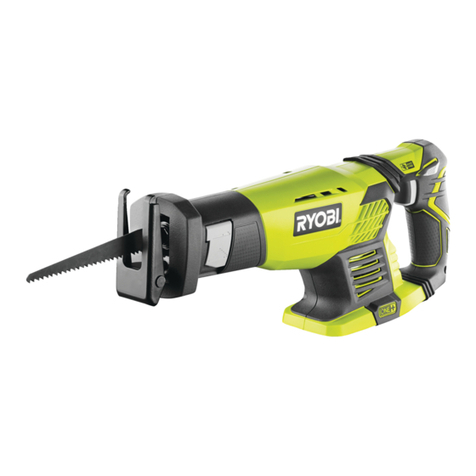
Ryobi
Ryobi RRS1801M User manual
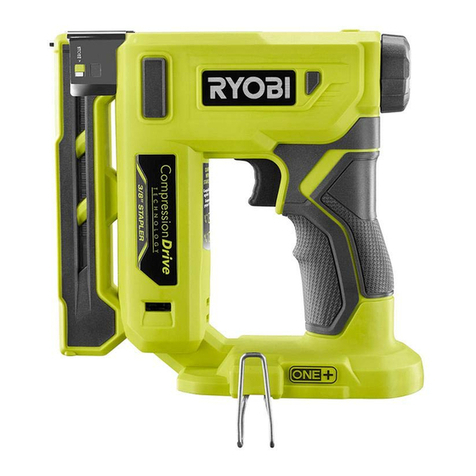
Ryobi
Ryobi P317 User manual
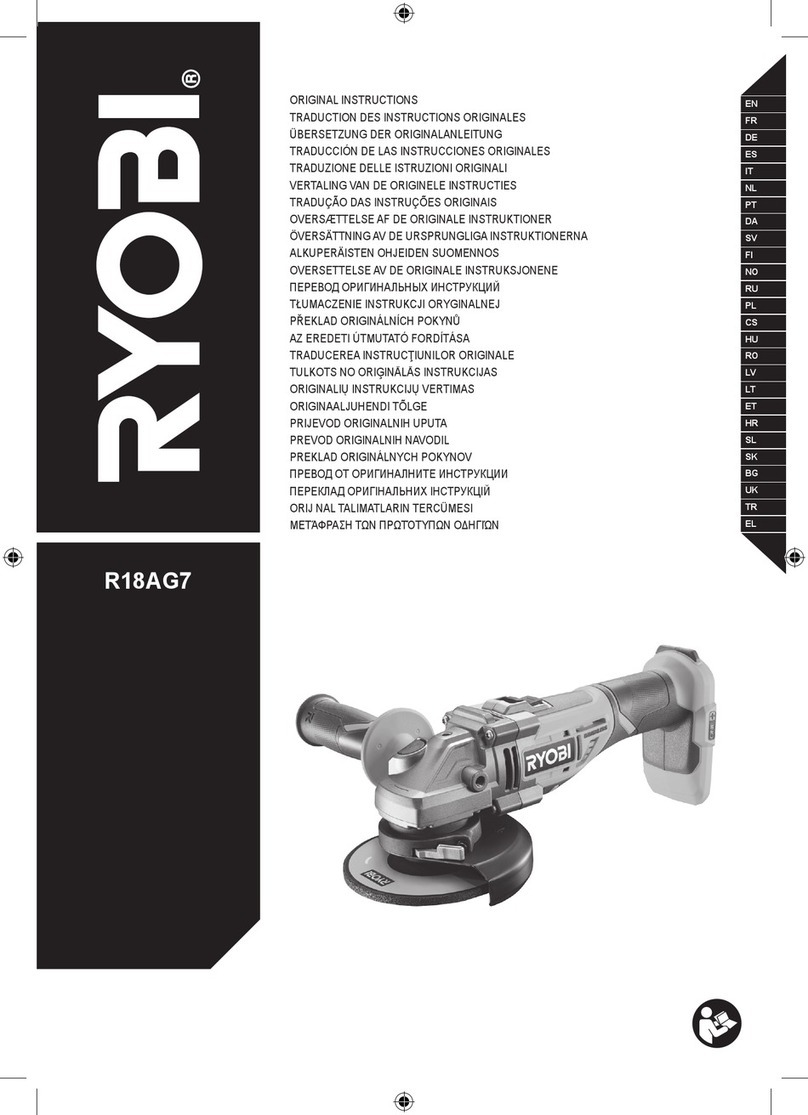
Ryobi
Ryobi R18AG7-140S User manual
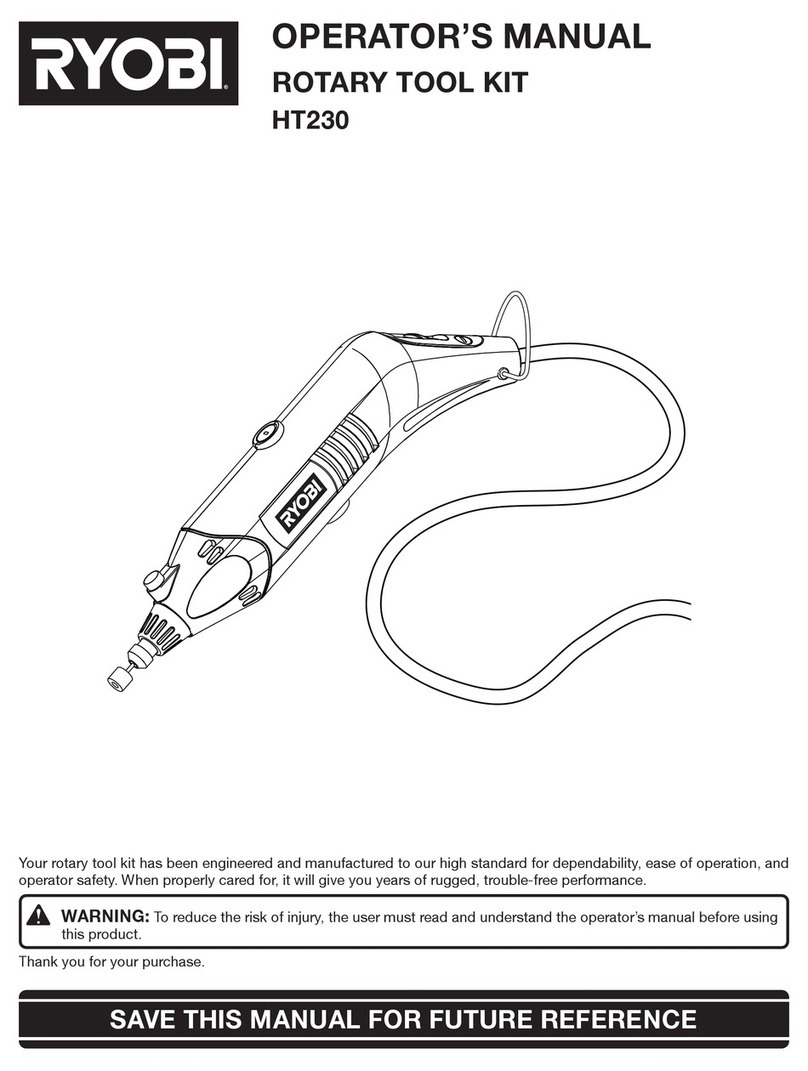
Ryobi
Ryobi HT230 User manual
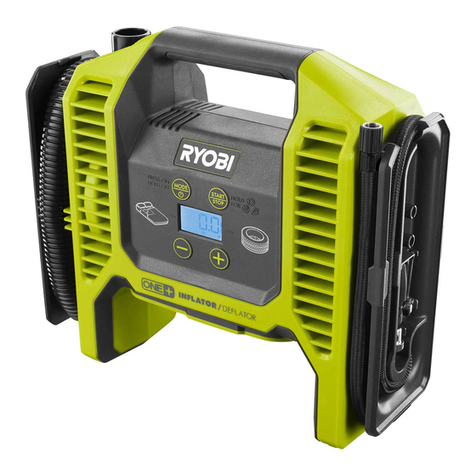
Ryobi
Ryobi R18MI User manual
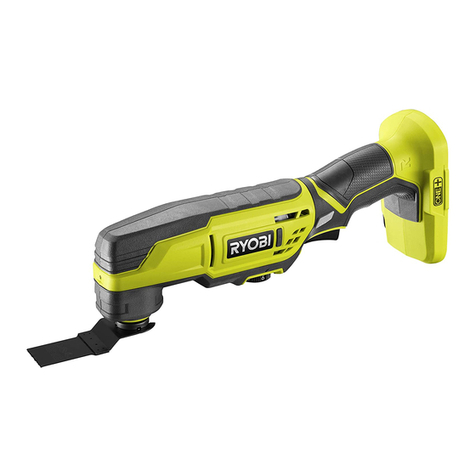
Ryobi
Ryobi R18MT3 User manual
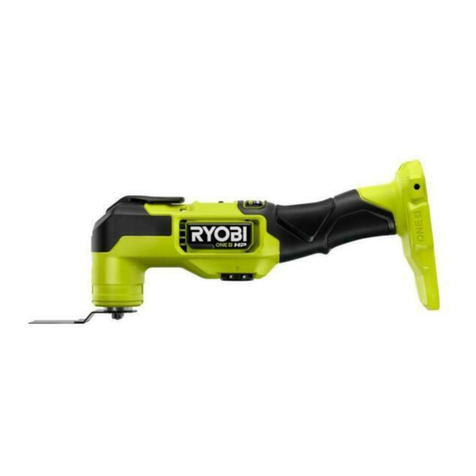
Ryobi
Ryobi PBLMT50 User manual

Ryobi
Ryobi MT100 User manual

Ryobi
Ryobi EJS600RG Operation manual
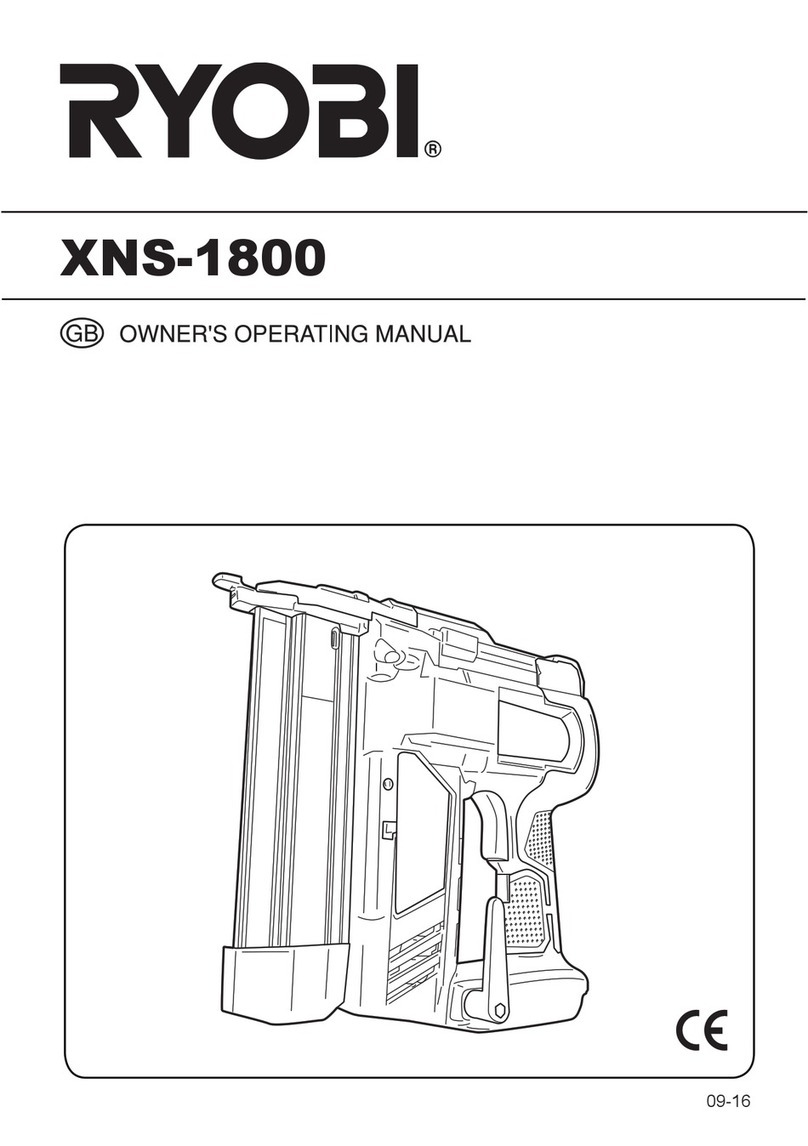
Ryobi
Ryobi XNS-1800 Operation manual
Popular Power Tools manuals by other brands
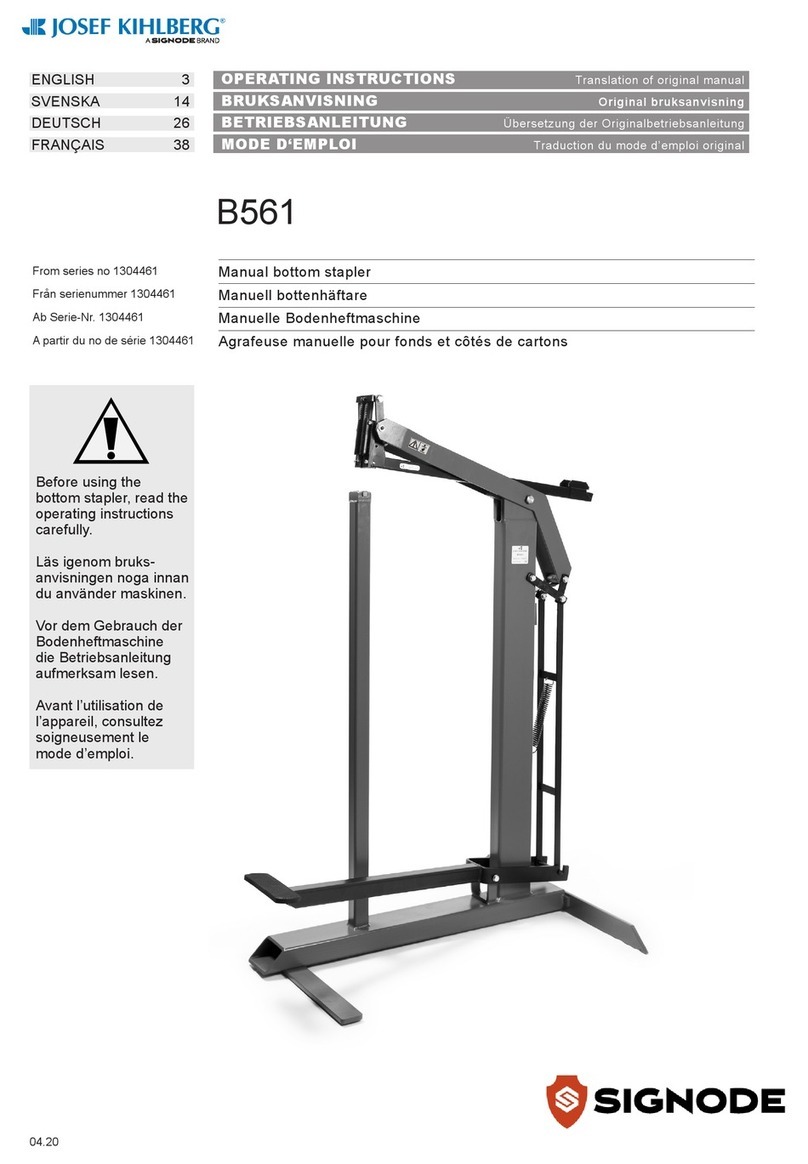
Signode
Signode Josef Kihlberg B561 operating instructions
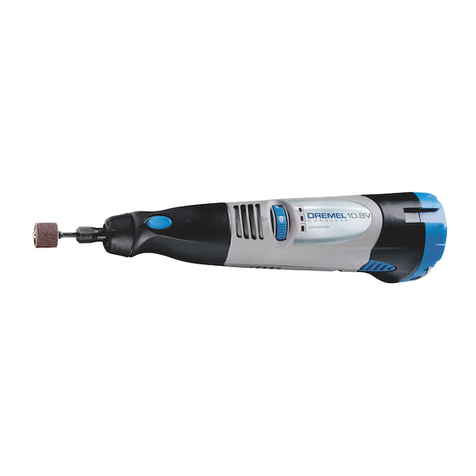
Dremel
Dremel 10.8V Cordless Rotary Tool 800 parts list
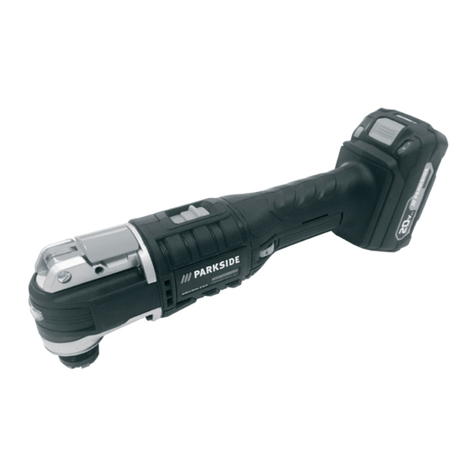
Parkside
Parkside PAMFWP 20-LI A1 Translation of the original instructions
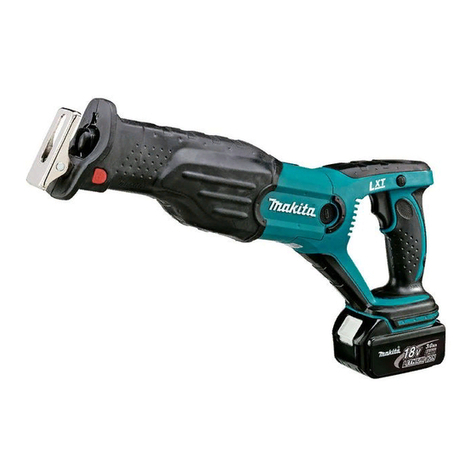
Makita
Makita DJR181 instruction manual
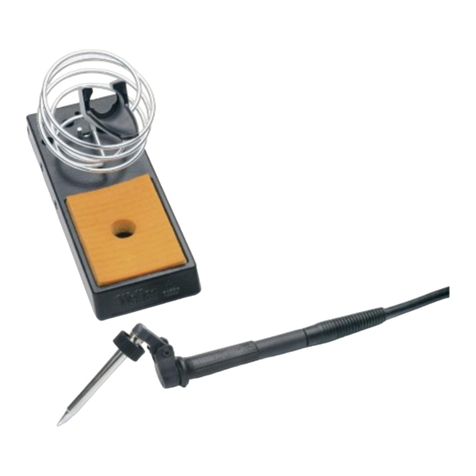
Cooper Hand Tools
Cooper Hand Tools Weller MPR 80 operating instructions
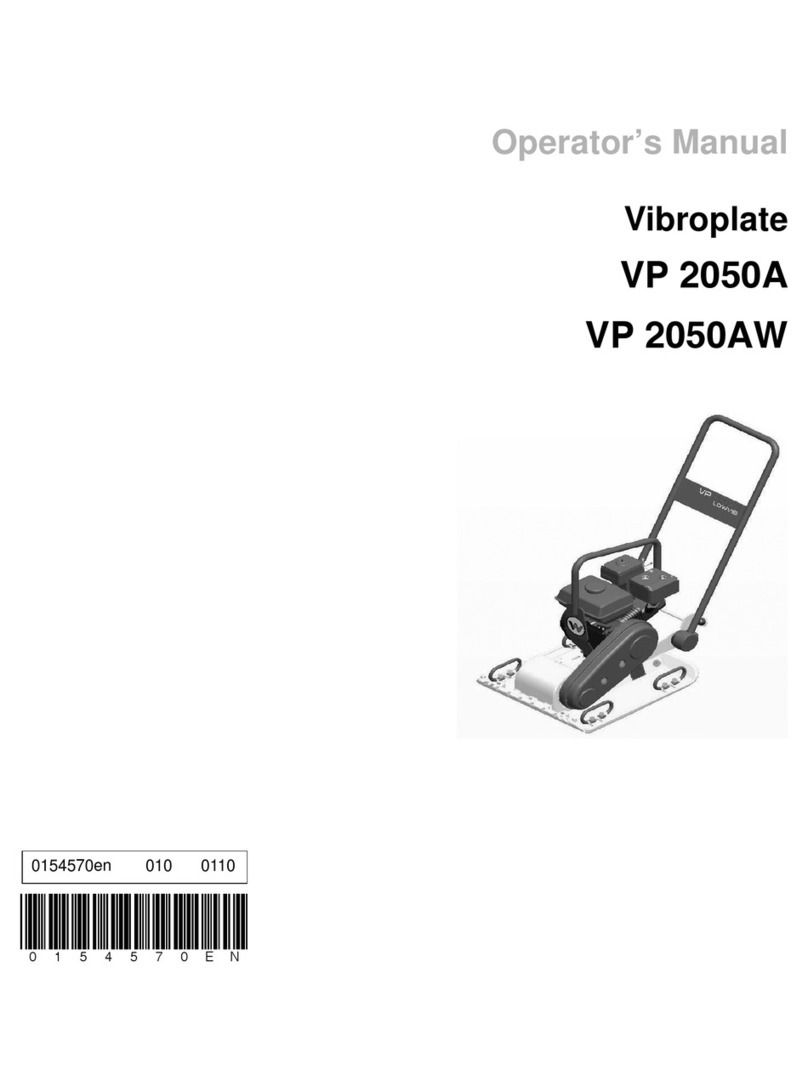
Wacker Neuson
Wacker Neuson VP2050A US Operator's manual
